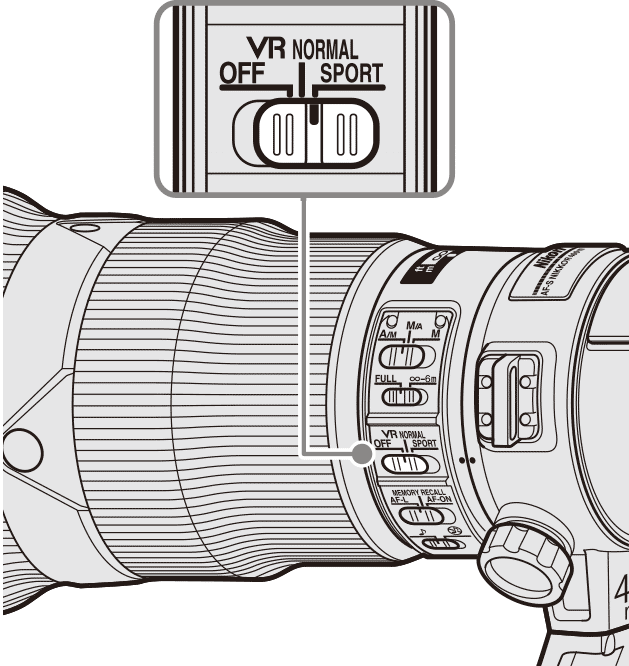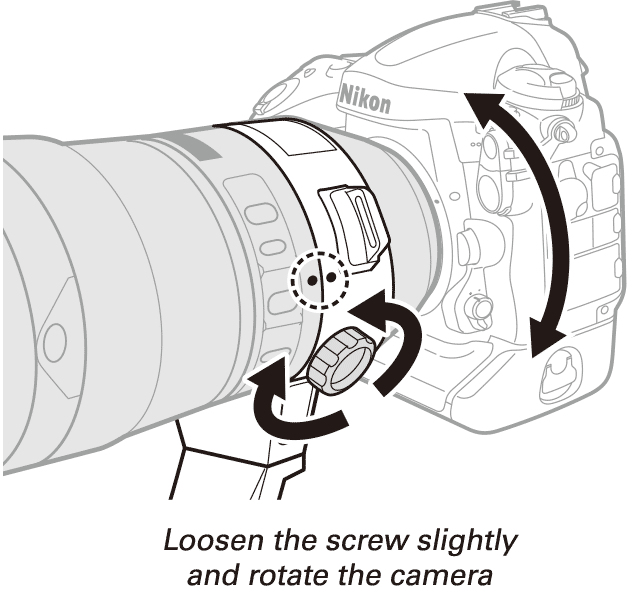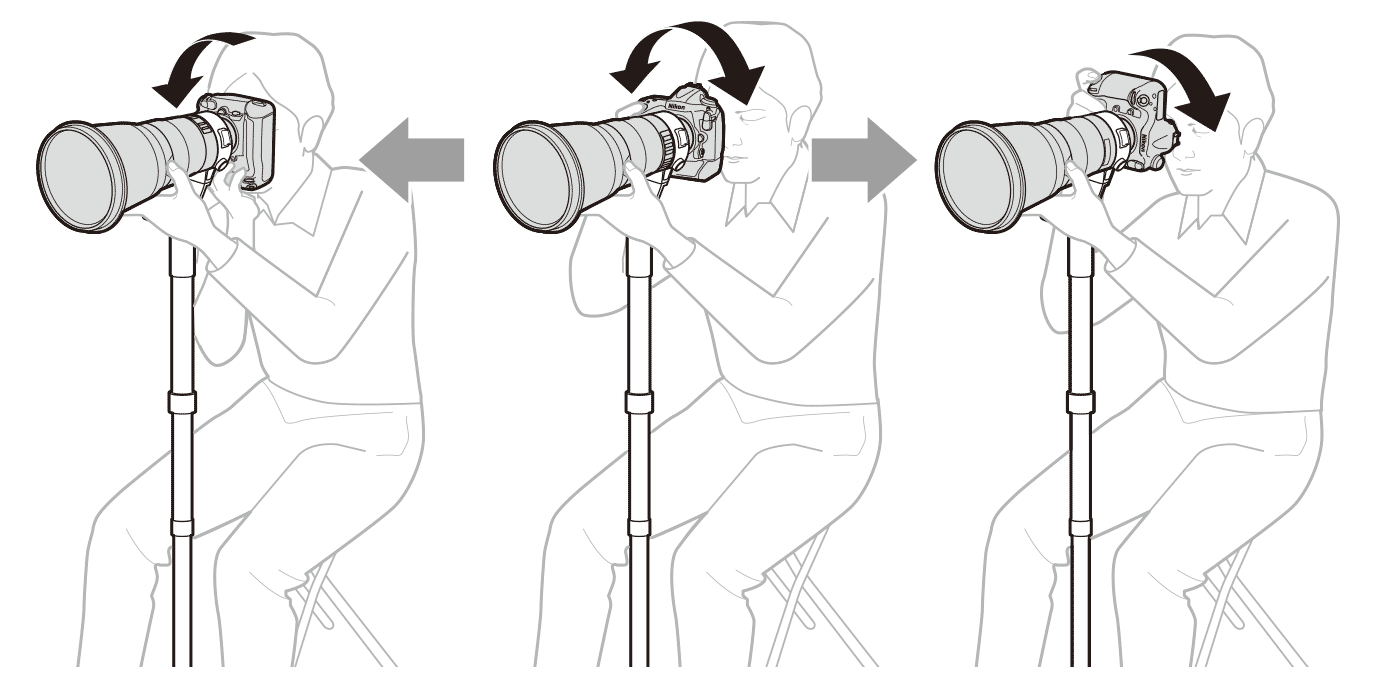
Global Support for Professionals
This section describes the benefits of using a D4S camera with an AF-S NIKKOR 400mm f/2.8E FL ED VR lens, which features a sport vibration reduction mode, perfect for soccer photos, and a built-in rotating monopod collar that lets you switch smoothly between landscape and portrait orientations.
The AF-S NIKKOR 400mm f/2.8E FL ED VR features a sport vibration reduction mode, which is selected by sliding the lens vibration reduction switch to SPORT.
Sport mode limits vibration reduction to the minimum needed for subjects that are moving quickly and unpredictably. The viewfinder offers a more stable image when the camera is mounted on a monopod. Even when the camera is hand-held, the image in the viewfinder remains as stable and smooth as if the camera were on a monopod, making it easier to track the subject when the camera is panned during high-speed burst shooting. Frame rate and shutter response are unaffected.

Sport mode: Image in viewfinder is stable and smooth.

Normal mode: More powerful vibration reduction makes the motion in viewfinder seem jerky and unnatural when the camera is panned.

Sport mode is adapted to fast shutter speeds and emphasizes the smooth display of subjects that are moving quickly and unpredictably, as is the case during soccer matches and in other sports. Choose NORMAL if the need for effective vibration reduction outweighs the benefits of a smooth display. The differences between sport and normal mode are summarized in the following table:
| SPORT | NORMAL | |
|---|---|---|
| Suited to | Moving subjects | Stationary subjects |
| Motion in viewfinder | Smooth | Jerky |
| Burst performance | Better | Worse |
| Pre-meter centering | No | Yes |
When the camera and lens are mounted together on a monopod, the built-in rotating monopod collar lets you smoothly take the camera from landscape to portrait orientation and back again.
Note that the monopod must be attached to the lens, not the camera, and that some monopods may contact your fingers if you hold the grip while rotating the camera.


At approximately 3800 grams (8.4 lb), the AF-S NIKKOR 400mm f/2.8E FL ED VR is lighter and easier to carry than earlier models. Compare the AF-S NIKKOR 400mm f/2.8G ED VR, which weighs about 4620 grams (10.2 lb).